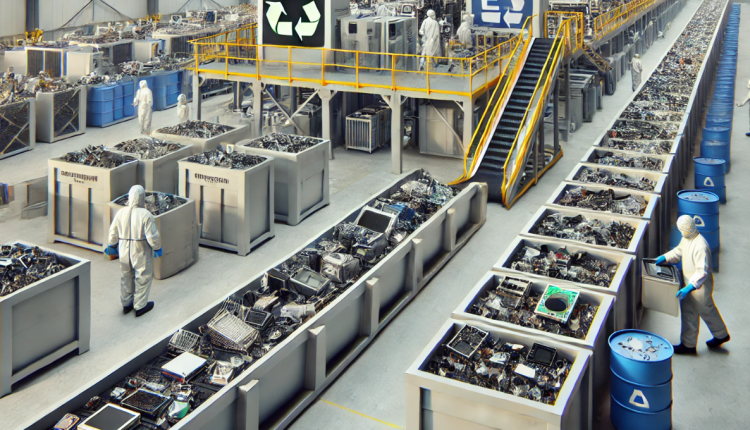- Advertisement -
In the digital age, electronic devices have become an integral part of our daily lives. From smartphones to electric vehicles, these technologies rely heavily on rare earth elements (REEs) for their functionality. However, the extraction and processing of REEs pose significant environmental and geopolitical challenges. As the demand for these elements continues to rise, recycling REEs from electronic waste (e-waste) emerges as a sustainable and strategic solution.
The Importance of Rare Earth Elements
Rare earth elements, a group of 17 chemically similar metals, are essential components in various high-tech applications. They are used in the production of permanent magnets, batteries, catalysts, and phosphors, among others. Despite their name, REEs are relatively abundant in the Earth’s crust but are rarely found in concentrated forms, making their extraction economically and environmentally challenging.
The global supply chain for REEs is heavily concentrated, with China dominating the market. This monopolization raises concerns about supply security, especially for countries heavily reliant on these imports. Furthermore, traditional mining practices for REEs are associated with severe environmental degradation, including habitat destruction, water pollution, and the generation of radioactive waste.
E-Waste: A Hidden Treasure Trove
Electronic waste, comprising discarded electronic devices, is one of the fastest-growing waste streams globally. These devices often contain significant amounts of REEs, making e-waste a valuable secondary source for these critical materials. Recycling REEs from e-waste not only mitigates the environmental impact of mining but also addresses the mounting issue of electronic waste disposal.
For instance, neodymium and dysprosium, vital for manufacturing high-performance magnets, are commonly found in hard drives and electric motors. Recovering these elements from obsolete electronics can significantly reduce the need for new mining operations.
Challenges in Recycling REEs
Despite the potential benefits, recycling REEs from e-waste presents several technical and economic challenges. The complex composition of electronic devices makes the separation and purification of individual REEs difficult. Traditional recycling methods often involve hazardous chemicals and energy-intensive processes, raising environmental and safety concerns.
Moreover, the low concentration of REEs in e-waste and the lack of standardized recycling infrastructure hinder the economic viability of these recycling efforts. Developing efficient, cost-effective, and environmentally friendly recycling technologies is crucial to overcoming these barriers.
Innovative Recycling Technologies
Recent advancements in recycling technologies offer promising solutions to the challenges of REE recovery from e-waste. Researchers are exploring various methods to enhance the efficiency and sustainability of the recycling process.
One such innovation is the use of bioleaching, where microorganisms are employed to extract metals from electronic waste. This method offers a more environmentally friendly alternative to traditional chemical leaching processes. Additionally, researchers are developing solvent extraction techniques that selectively separate REEs from other metals, improving the purity and yield of the recovered elements.
Another notable development is the creation of closed-loop recycling systems, where recovered REEs are directly reused in the manufacturing of new products. This approach not only conserves resources but also reduces the environmental footprint associated with the production of REEs.
Policy and Economic Considerations
Government policies and economic incentives play a pivotal role in promoting the recycling of REEs from e-waste. Implementing regulations that mandate the recycling of electronic devices and provide subsidies for recycling initiatives can stimulate investment in recycling infrastructure. Furthermore, establishing international standards for e-waste management can facilitate the global trade of recyclable materials and promote best practices in recycling.
Public awareness campaigns and education programs are also essential in encouraging consumers to participate in e-waste recycling programs. By fostering a culture of recycling, societies can collectively contribute to the sustainable management of REEs and the reduction of electronic waste.
The Road Ahead
The recycling of rare earth elements from electronic waste presents a viable pathway toward sustainable resource management and environmental conservation. While challenges remain, continued research and innovation, coupled with supportive policies and public engagement, can unlock the full potential of e-waste as a valuable resource.
By embracing the principles of a circular economy, where materials are reused and recycled, we can reduce our dependence on environmentally damaging mining practices and ensure a stable supply of critical materials for future technological advancements. The journey toward sustainable REE recycling is not only a technological endeavor but also a collective commitment to preserving our planet for generations to come.

